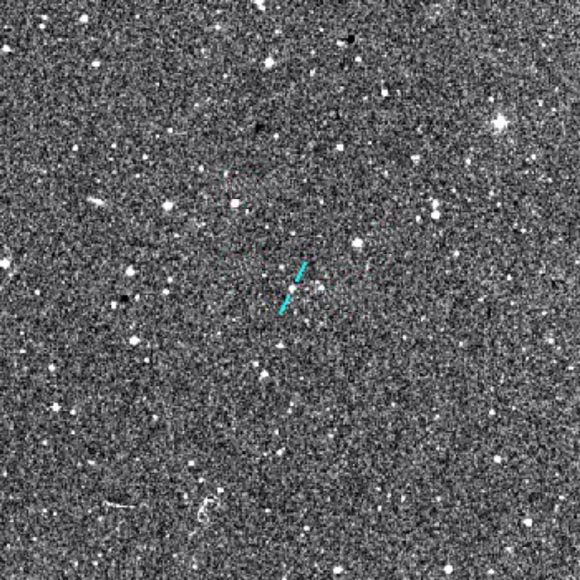According to a study accepted for publication in the Astrophysical Journal Letters (arXiv.org version), a blazar called PKS 1424+240 is the most distant known source of very high-energy gamma rays.

Blazar PKS 1424+240 (Perugia Blazar List)
Blazars are the brightest of active galactic nuclei, and many emit high-energy gamma rays. Gamma rays from the blazar PKS 1424+240 were first detected by the Fermi Gamma-ray Space Telescope.
Researchers at the University of California, Santa Cruz, used data obtained by the Hubble Space Telescope’s Cosmic Origins Spectrograph to set a lower limit for the blazar’s redshift (z ≥ 0.6035), which corresponds to a distance of at least 7.4 billion light-years.
Over such a great distance, a substantial proportion of the gamma rays should be absorbed by the extragalactic background light, but calculations that account for the expected absorption yield an unexpected emission spectrum for the blazar.
“We’re seeing an extraordinarily bright source which does not display the characteristic emission expected from a very high-energy blazar,” said lead author Amy Furniss.
“The findings may indicate something new about the emission mechanisms of blazars, the extragalactic background light, or the propagation of gamma-ray photons over long distances,” said co-author Prof David Williams.
“We’re finding very high-energy gamma-ray sources at greater distances than we thought we might, and in doing so we’re finding some things we don’t entirely understand. Having a source at this distance will allow us to better understand how much background absorption there is and test the cosmological models that predict the extragalactic background light (EBL).”
EBL is the diffuse radiation from all stars and galaxies, a dim but pervasive glow that fills the universe. When a high-energy gamma-ray photon collides with a lower-energy EBL photon, they annihilate and create an electron-positron pair. The farther gamma rays have to travel the more likely they are to be absorbed by this mechanism. This limits the distance to which sources of very high-energy gamma rays can be detected.
Measuring the EBL is extremely difficult because there are so many bright sources of light in our immediate neighborhood. In addition to estimates based on cosmological models, astronomers have used galaxy counts to set a lower limit for the EBL.
Using a model close to this lower limit to calculate the expected absorption of very high-energy gamma rays from PKS 1424+240, the Santa Cruz team derived an intrinsic gamma-ray emission spectrum for the blazar. The results, however, deviate from the expected emission based on current blazar models.
Blazar emission is thought to result from a relativistic jet of particles powered by matter falling onto a supermassive black hole at the center of the host galaxy.
“There may be something going on in the emission mechanisms of the blazar that we don’t understand,” Prof Williams said. “There are more exotic explanations as well, but it may be premature to speculate at this point.”
______
Bibliographic information: Furniss A et al. The Firm Redshift Lower Limit of the Most Distant TeV-Detected Blazar PKS 1424+240. ApJ Letters, accepted for publication on April 10, 2013; arXiv: 1304.4859







